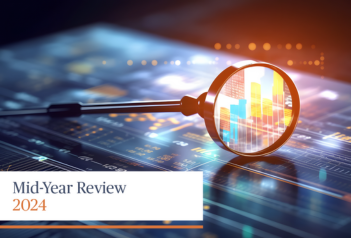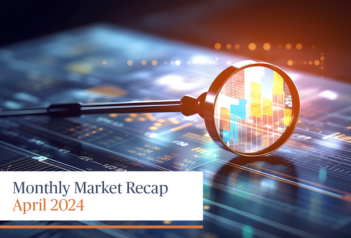The new year brings all kinds of forecasts and predictions, especially a year with a presidential election. We enter this decade in the longest bull market in history. Investors look into a future that likely includes negative interest rates, technological disruptions, and a move from globalization to populism. Politics have always been contentious, but never so much as they are today, and it seems a lot of investors and hedge fund managers are voting with their capital.
What can we expect from the market in the year ahead? Rather than speculate on what a certain presidency might look like, let’s turn to history for guidance.
How does the presidential cycle affect the market?
This chart (from Bespoke Investment Group) shows the average performance of the S&P 500 Index in each year of the presidential cycle going back to 1928:

Years one and two have historically been weaker than years three and four. The S&P 500 has been up 56.5 percent of the time in both year one and year two, but the index has been up 81.8 percent of the time in year three and 72.7 percent of the time in year four.
By far the best year of the cycle is year three, with an average gain of 12.81 percent, and 2019 certainly stuck to that playbook, with the S&P 500 finishing the year up 30 percent. While year four has historically been positive, with gains 72.7 percent of the time, the average change for the S&P 500 in year four (+5.71 percent) is just barely better than the average change in years one and two. Two of the last four election years – 2000 and 2008 – were terrible years for the stock market.
Averages are just averages, after all, and the market hates uncertainty. Stocks often get choppy in the months before the market determines a potential winner. Once that uncertainty lifts, though, the market tends to move forward, regardless of political party. Sometimes the market anticipates one outcome and gets another: Truman in 1948, Nixon in 1972, and Trump in 2016 illustrate how stocks can get whipsawed when predictions don’t match up with outcome. The bottom line is that uncertainty about elections has historically been a headwind for stocks until the market settles on a likely outcome.
We expect the market to move up and down in this choppy phase of the election cycle until May. Dates to keep in mind are February 3, the day of the Iowa caucus, Super Tuesday on March 3, the Democratic National Convention in Milwaukee on July 13-16, and the Republican National Convention in Charlotte on August 24-27.

What other factors play out in a presidential year?
The outcome of the presidential election is not the only one affecting how stocks perform. As the chart below shows, the make-up of the House and Senate also matters. The market can reflect Congress’ willingness to work with the president to pass regulations that benefit the economy and the American people.

2019 was a very good year for stocks, and we expect to see a lot of rotation and volatility across industries and sectors leading up to the election. Energy, biotech and healthcare providers, private equity and others may come in the crosshairs of politicians as they jockey for votes.
We think the two most likely outcomes are Trump’s re-election or an experienced centrist (not a progressive left) Democrat, which would be neutral or initially positive for markets. We do not think the U.S. elections are a key risk that should keep investors out of the market. The main threat to that theory would come from U.S. trade policies and an escalation of the trade war, injecting volatility into financial markets and preventing a global recovery. But our base case is no recession in 2020.
What is Sendero doing about this?
First, we increased our Stability allocation throughout 2019, including adding to cash and ultra-short bonds, while reducing our Growth allocation. We anticipate more bouts of volatility in 2020 with the potential for a correction (a ten percent or more dip in stock prices). Diversification remains the best tool for investors to protect their capital.
Second, if the opportunity presents itself, we will redeploy our cash and other investments in Stability and Diversifier to take advantage of lower-asset prices. As Warren Buffet once said, “Be fearful when others are greedy and greedy when others are fearful.”
Third, we believe in educating you about the risks of underachieving your goals by trying to be “all in” or “all out” of the stock market. Plenty of research shows that delaying your entry back into the market in search of “the right time” can drastically cut long-term portfolio returns. Time in the market is better than timing the market.
Thank you for your continued confidence in Sendero.
Amaury de Barros Conti
Vice President, Research & Strategy


